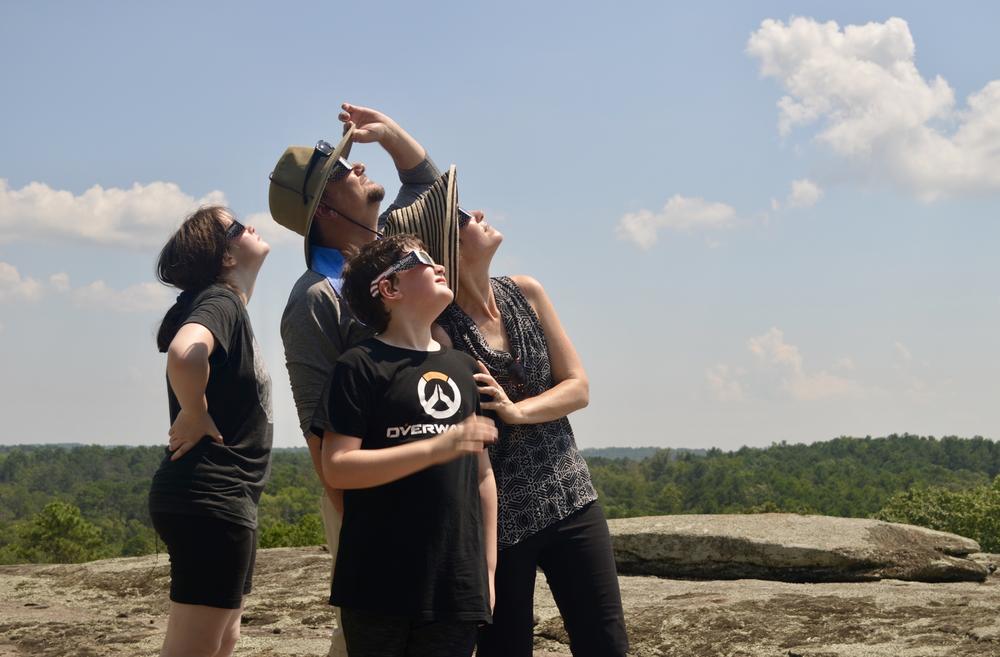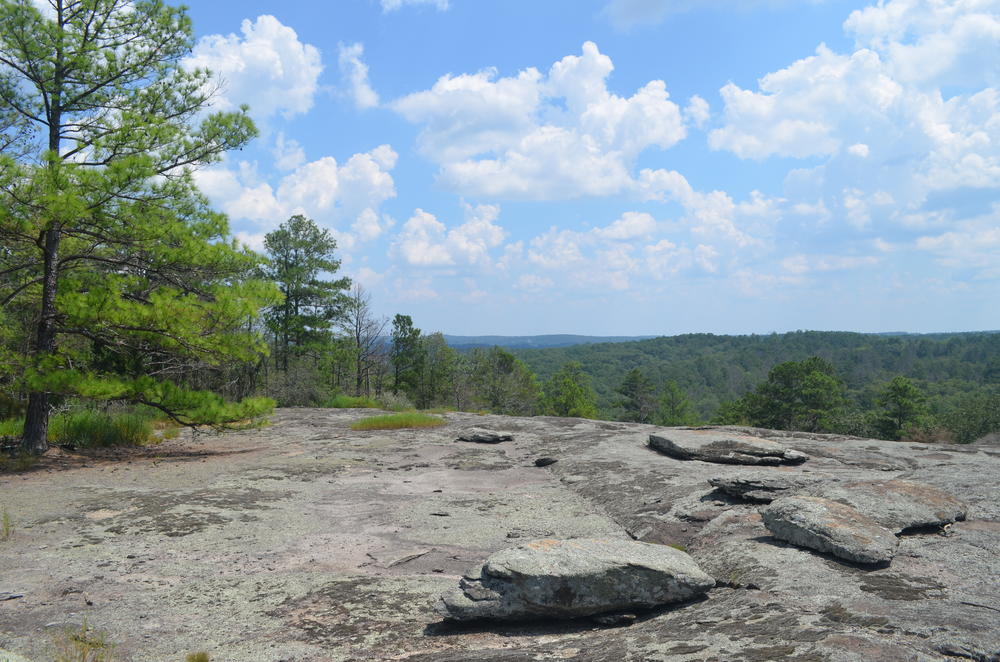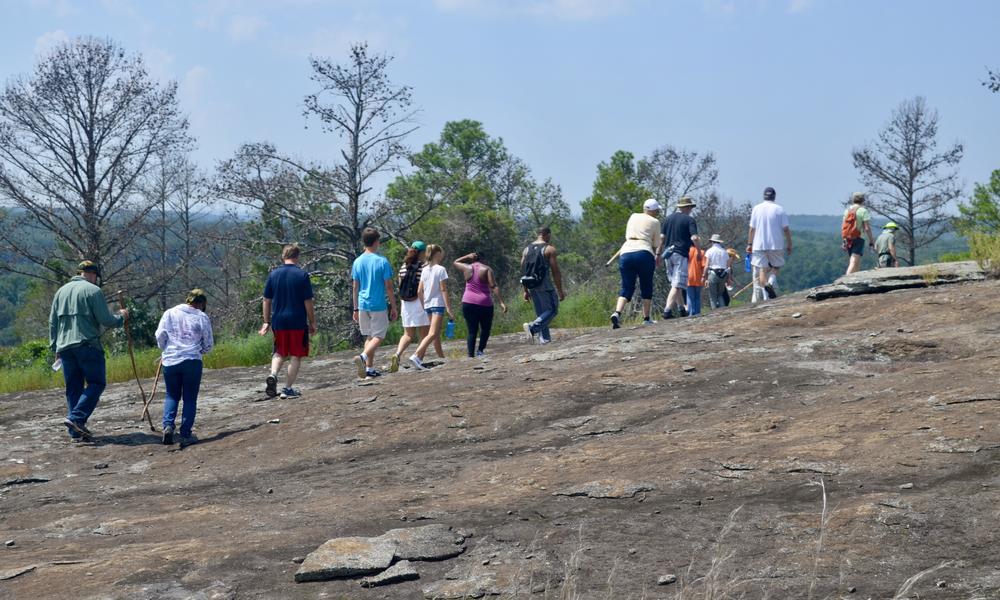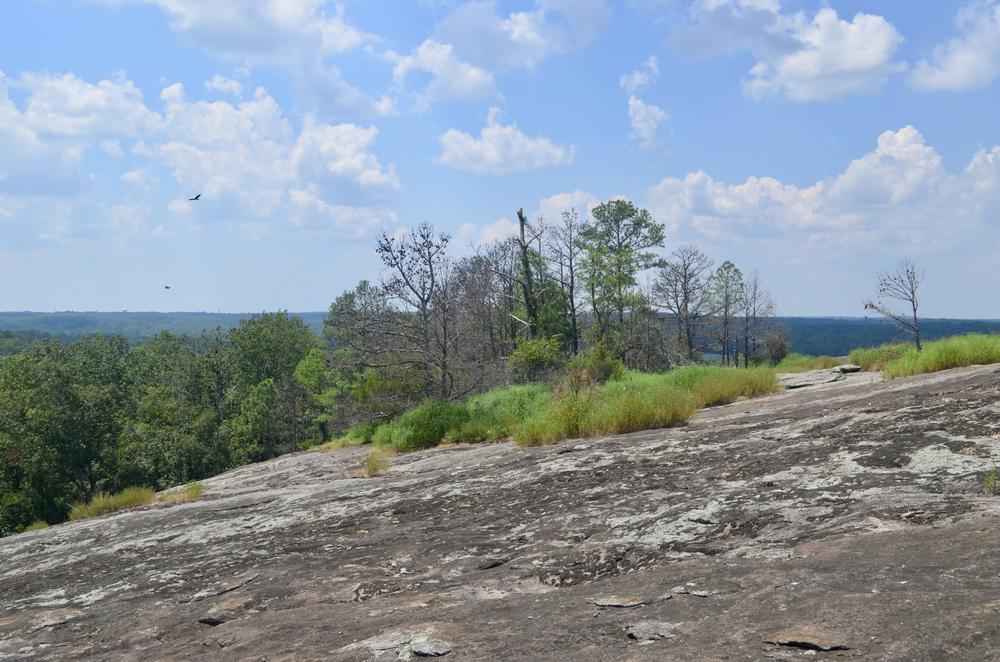
Section Branding
Header Content
Solar Eclipse 2017: Moon Shadows And Moonscape Rocks
Primary Content

For days, weeks, even months, millions of Americans planned for the best solar eclipse experience possible under their own unique circumstances. Some school systems ordered protective glasses for every student and employee so that their educational communities could enjoy this ultimate teachable moment. Some families took the day off work and school to make an outing of the event. Some observers watched the amazing images unfold via live television and online coverage. Some individuals briefly paused from their busy schedules to gaze up at the sky for two minutes of magic.
Living and working in metro Atlanta on the day of the eclipse, my plan was to find a viewing spot that was open, high, and nearby. Naturally, my thoughts turned towards a monadnock – you know, “an erosion-resistant rock rising above a peneplain” (oxforddictionaries.com). Sound familiar? We have three of them within a 30-minute drive of the Atlanta city center.

According to GPB’s free virtual field trip Physical Features of Georgia, Stone Mountain is the largest mass of exposed granite in the world, Arabia Mountain is a “moonscape rock” within a 40,000-acre national heritage area, and Panola Mountain is the last pristine monadnock in the Piedmont region, only accessible via guided hike. Which to choose? After discovering that only 50 guests would be allowed on Panola Mountain for the eclipse, we registered for the associated three-mile, three-hour hike and looked forward to something truly special.

The afternoon of the hike was bright and sunny – a great day to view the eclipse as long as you are up for 90-degree temperatures on the mountain top! Our diverse group contained people from many different ages and backgrounds, anxious to witness the eclipse. Within 30 minutes we had enthusiastically reached the peak, in time to catch the moon shadow just beginning to take a bite out of the sun. Over the next hour, we sat out on the stone or in the shade of the scraggly pines and watched the slow progress of the eclipse, ultimately enjoying the slightest crescent of a sunshine smile and several moments of dusk stillness in the middle of the day.

Even without the grand finale of a near-total solar eclipse, just spending time on the top of Panola Mountain was an amazing experience, with the black vultures gliding overhead and the resurrection moss on the rock turning from dark gray to bright green with just a few drops of our precious bottled water. Before visiting the three monadnocks yourself, explore them virtually using GPB’s virtual field trips to Arabia, Panola, and Stone Mountains. And relive the awe of those few otherwordly eclipse moments with archival footage from Discovery Education’s Great American Eclipse live feed.
Secondary Content
Bottom Content





